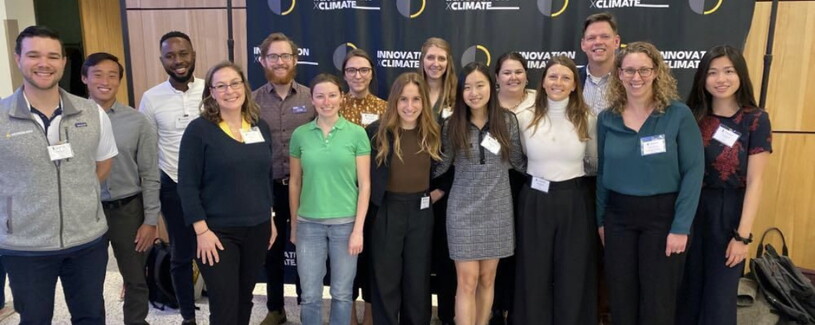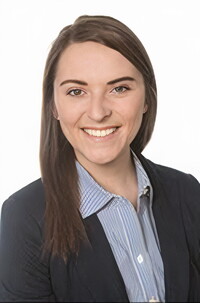Career Experimentation in Graduate School
An MBA student's low-risk experiment to determine if a career as a startup founder was her "optimum match quality"

I came to the Yale School of Management in pursuit of my MBA because my chemical engineering career goals that once felt safe and certain had become unsatisfactory. In his book “Range – How Generalists Triumph in a Specialized World” David Epstein defines match quality as a term economists use to describe the degree of fit between the work someone does and who they are – their abilities and proclivities. I am using graduate school as the time to pivot my career toward my optimum match quality.
As a STEM professional, I know the power of experimentation. So, to gain a better understanding of my professional preferences, I have conducted many small experiments throughout my MBA. I start with an idea, test it, refine its parameters, and sometimes readily abandon it for a better match quality. One of my recent experiments was testing the hypothesis: I want to be a startup founder. Below is a summary of my experimental procedure and findings.
Step 1: Find time and resources to pursue your experiment
To give my hypothesis a fair shot, I needed time and resources to conduct my experiment. I executed this experiment via the ClimateCAP Fellowship. This one-year fellowship gave me and eleven other MBA students funding and resources to conduct an independent, climate-action project.
Step 2: Pick an idea through which to test your hypothesis
To determine whether I wanted to be a startup founder, I needed an idea for a startup. A problem serves as the foundation of a company. I needed to identify a problem, a big one, that I was not only passionate about but also uniquely positioned to solve. With previous experience in fiber development and awareness of the growing negative environmental impacts of the fashion industry, I researched environmental problems the fashion industry was facing. The problem that rose to the top of my list was overproduction. Overproduction is when more is produced than can be sold. Of the estimated 100 to 150 billion items of clothing produced every year, 20 to 30 billion items–roughly 20 percent–are not sold.1,2
Step 3: Brainstorm a solution
There are many techniques for conducting a brainstorming session—take your pick. My brainstorming led me to the idea of make-to-order fashion. Make-to-order fashion means that a firm does not produce an article of clothing until a consumer has placed an order for it. This means that supply perfectly matches demand—no overproduction. But, today, relative to mass market giants, make-to-order fashion models are small and expensive. My solution, a software as a service (SaaS) application that would allow customers to pre-order from mass-market brands. Such an application would help large retailers more perfectly match supply and demand, eliminating overproduction. The value to retailers would be reduced cost and waste.
Step 4: Develop customer personas
A customer persona is an archetypal representation of existing subsets of a firm’s customer base. Two groups of customers would interact with my proposed platform—shoppers and retailers. The shoppers would pre-order items from retailers and the retailers would integrate the SaaS tool into their existing e-commerce channels. These customer personas informed what I needed to learn about my customers.
Step 5: Discovery
Discovery is a critical stage in the life of any startup. The goal of discovery is to reduce uncertainty about who your customers are, understand what your customers need, and ensure you are building the right product. The job during discovery is to talk to a lot of people, ask good questions, and listen. I took the job of talking to a lot of people very seriously. I distributed a survey to the Yale community and talked with several mass-market brands. A few of the takeaways from my discovery included:
- Typical shoppers prioritize price, aesthetic, and durability when making purchases, sustainability is usually considered a ‘nice to have’.
- Shoppers do not proactively plan their clothing purchases. Instead, customers generally purchase items on a whim or to address an immediate need.
- Consumers would need a financial incentive, such as a discount, to adopt pre-ordering.
Step 6: Refine the solution
With listening comes openness to change; I needed to refine my idea. My discovery revealed an adult consumer’s lack of willingness to change. Getting adult shoppers to pre-order was going to be challenging. So, I turned to the children’s clothing market. In many places there is a preexisting culture of planning for a baby’s birth. This planning includes advanced purchasing of a variety of clothing based on the typical child’s growth cycle. To increase the likelihood of consumer adoption, I refined the scope of my idea to be a pre-order SaaS solution for children’s clothing brands.
Step 7: Develop a minimally viable product (MVP)
An MVP is the most basic version of your product that can test the hypothesized core benefits of your idea. The most important element of my product was whether customers would be willing to pre-order clothing. If this was not true, there would be no end market demand driving the need for retailers to use my SaaS application. The cheapest and simplest way that I could test this behavior was with a digital pre-order form. I created an order form very similar to a Girl Scouts cookie order form. This approach would be scrappy; I planned to distribute the order form to my personal connections, track the number of responses, and procure and ship the ordered clothes on my own dime. I was inspired by Zappos' MVP; resourceful MVPs can turn into companies that generate $975 million in revenue in a year.
Step 8: Create a pitch deck
It was time to put it all together via a pitch deck. My pitch deck included components such as a hook, an overview of the problem and opportunity, my proposed solution along with its competitive advantage and value proposition, a strategy for customer acquisition, the competitive landscape, and more. After building my pitch deck I had the 360º view of my startup; the path ahead would be challenging.
Step 9: Reflection
Once I had completed my pitch deck, I paused and reflected. Was I ready to devote the next chapter of my life to solving the problem of fashion overproduction via my startup? No, I was not. And that's ok.
Someone once told me that if you are going to be a startup founder, you shouldn’t want to do anything else. At the end of my experiment, I did not feel this way. It was clear I did not want to be a startup founder. I felt better match quality in other career paths. Despite not wanting to be a founder, I learned that I like the creativity, adaptability, and novel technology of the entrepreneurial space. So, what is my next experiment? I would like to explore growth (series B/C) or scale (series D+) climate tech start-ups. I am in pursuit of a role that will leverage my engineering experience and business education to scale a novel solution that addresses a large-scale environmental problem.
I challenge every reader, especially those looking to make a career pivot, to reflect on where you can not only use your skills to drive change but also find your "match quality". We each have one lifetime and throughout it, on average, we spend 90,000 hours working, it is important to love what you do. And that's what I intend to do.
This project was completed as part of the ClimateCAP Fellowship, a program of the ClimateCAP Initiative led by Duke University’s Fuqua School of Business and supported by the Hearst Foundations.
Thank you to Yale School of Management Professor Tristan L. Botelho for being a part of this process via the first-year MBA required course MGT 421 Innovator. As well as my classroom team members Samantha Cao, Hiroki Kawamura, Jonah Kelly, Marc Mazzucco, and Kiana Mendes.
[1] More than 100 billion according to McKinsey and the Ellen MacArthur Foundation
[2] Overproduction is often considered about 20% of total production according to Karla Magruder, Founder of Accelerating Circularity


